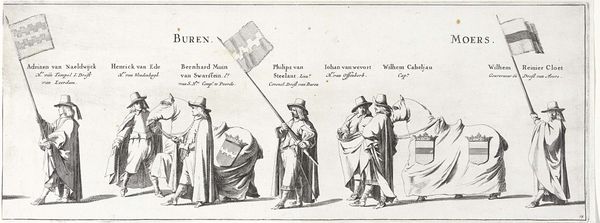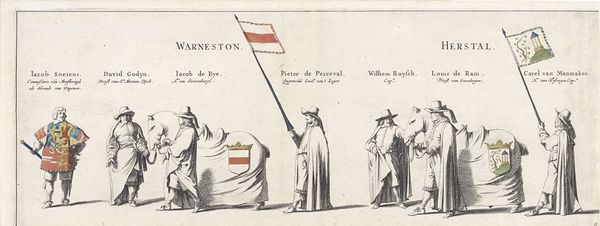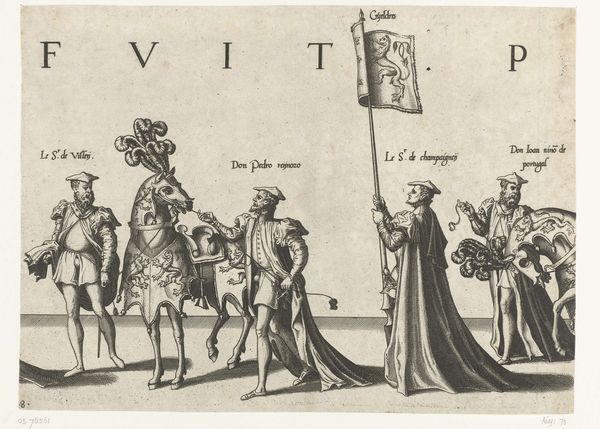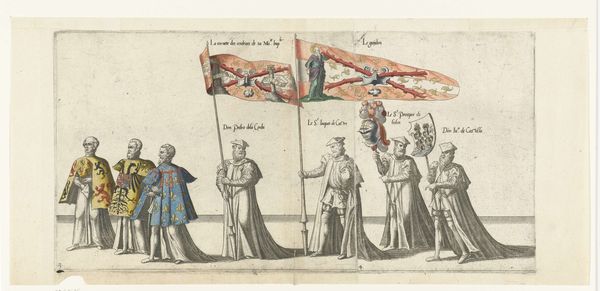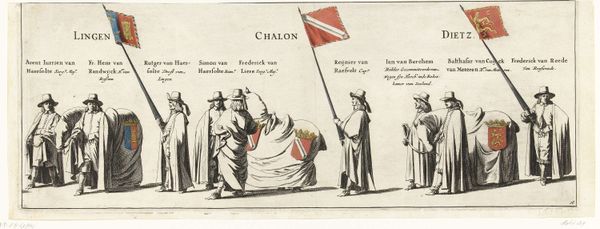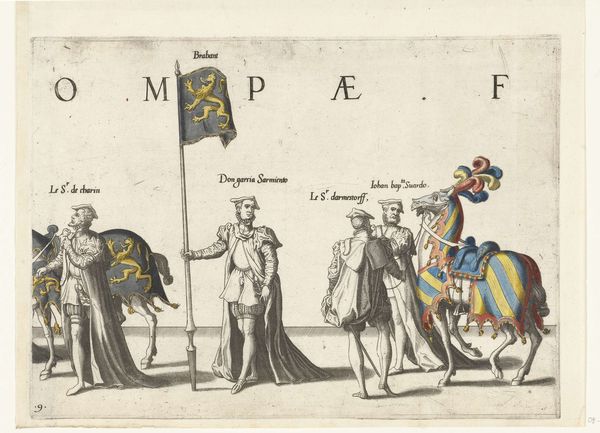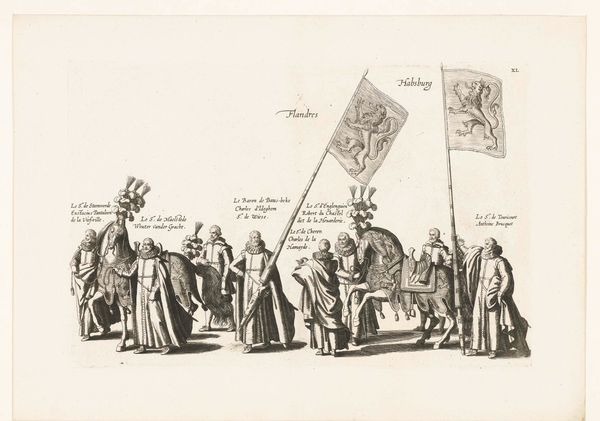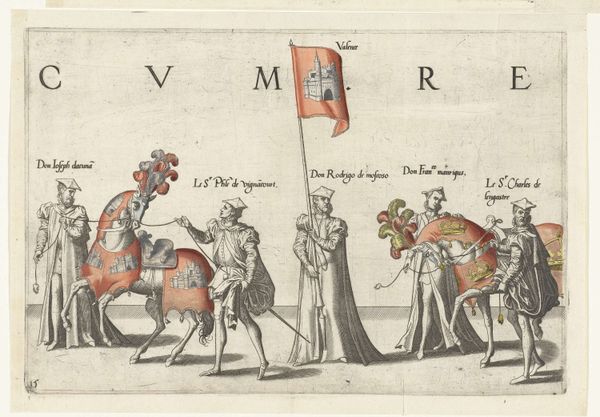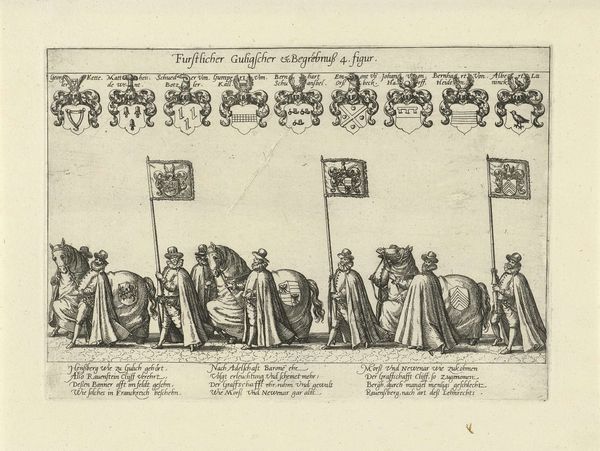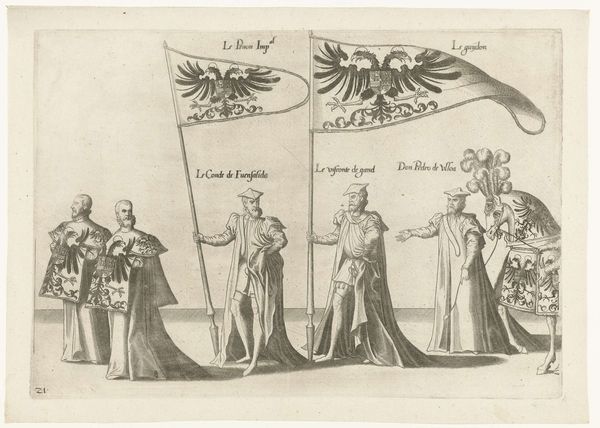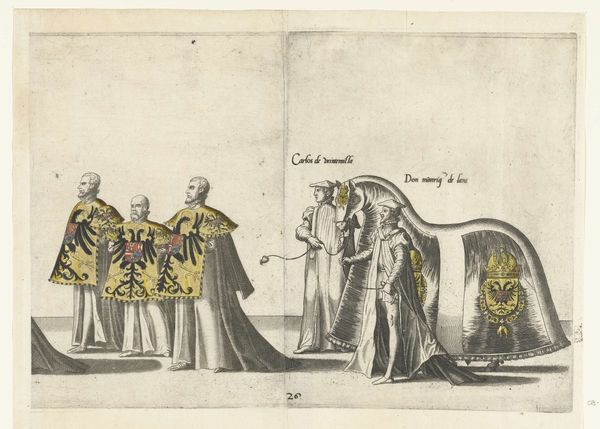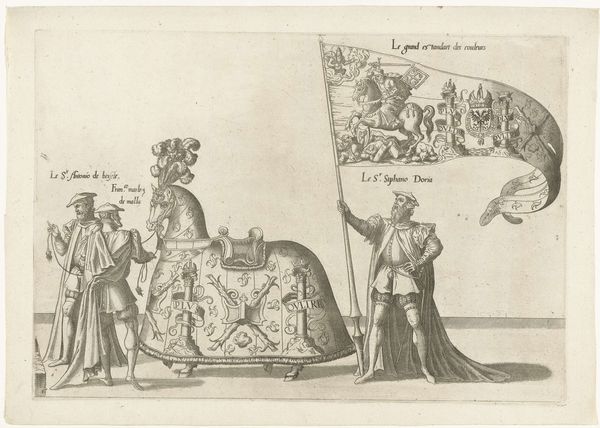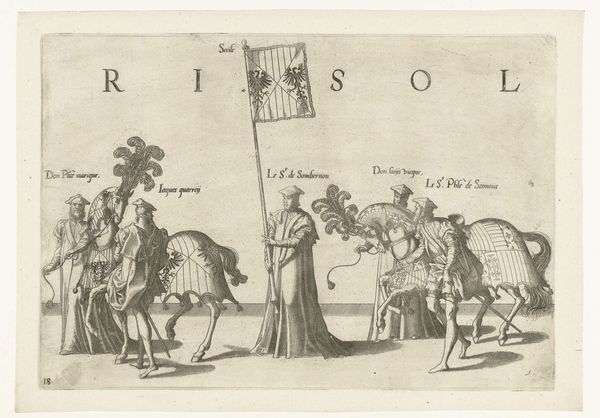
print, engraving
#
portrait
#
baroque
# print
#
figuration
#
line
#
history-painting
#
academic-art
#
engraving
Dimensions: height 335 mm, width 241 mm
Copyright: Rijks Museum: Open Domain
Curator: This print, currently residing at the Rijksmuseum, is titled *Portret van Hardouin de Péréfixe de Beaumont*. It dates back to 1667 and is the work of Claude Mellan. Immediately, the emphasis on line is apparent—crisp, decisive marks. Editor: It feels quite… formal, wouldn't you agree? Stiff even. The figures appear so deliberately arranged, like pieces in a somber tableau. It feels very staged. Curator: Yes, that stiffness is interesting. Mellan’s technique emphasizes the formal qualities of portraiture, the subject’s status. Notice the use of purely linear description to shape the contours and create volume? Semiotically, this contributes to the visual encoding of authority and refinement. Editor: Which makes sense when you consider the political and social climate. Who was Hardouin de Péréfixe de Beaumont? Was Mellan attempting to create something almost… monolithic, reflecting Beaumont’s place in society? Curator: Precisely! Beaumont was a prominent figure – a historian and clergyman. This image probably sought to immortalize him as an emblem of that era. The medium of engraving was perfect to convey that status because prints could disseminate that message widely to a bourgeois and aristocratic public sphere. Editor: So, it’s less about individual likeness and more about communicating position, influence... power, really. Even the composition itself feels like a statement—balanced, ordered, controlled. Is that simply a feature of the era or something intentional, specifically from Mellan? Curator: A bit of both. Baroque art definitely leaned towards grandeur and control, a way of visually asserting order, which fits the absolutist regimes present across Europe at the time. But Mellan's distinctive linear style intensifies those features, creating a kind of visual precision, and intellectual gravity, for the figure. It invites interpretation in many formal directions. Editor: It’s fascinating how much can be conveyed through line and form alone. It also suggests that to look at artworks means that you need to consider not only individual skill but also the historical factors shaping the production, reproduction, and sharing of those visuals with the public. Curator: Exactly. And appreciating Mellan's skill allows us to understand the aesthetic and sociopolitical values embedded within even seemingly simple images. Editor: I leave with a greater sense of what an image can communicate regarding the status of powerful individuals. Curator: Indeed, and how the structure of the image and social context both shape reception in different eras.
Comments
No comments
Be the first to comment and join the conversation on the ultimate creative platform.
